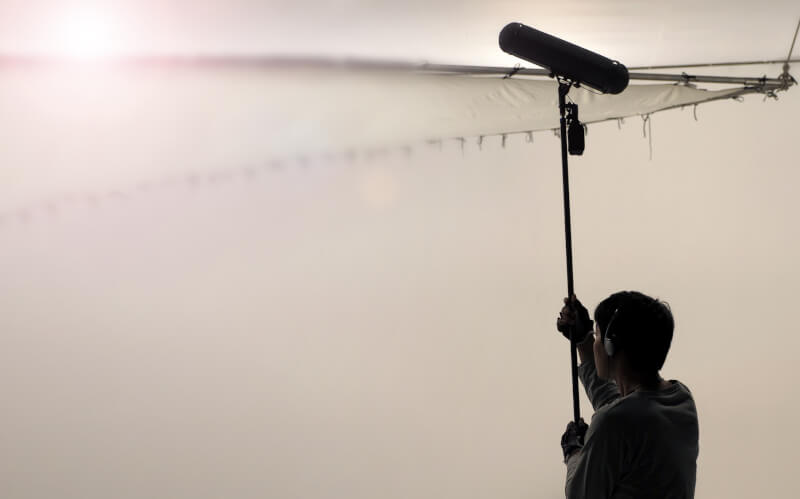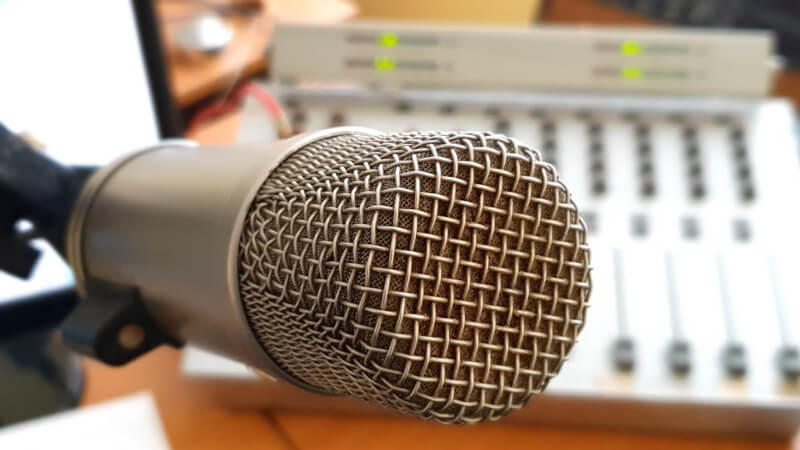Most cinema buffs don’t even consider the audiovisual elements of films. The visuals may be what draws in the crowds, but the aesthetics of sound, which are frequently just as important to a film’s success, may go undetected. The absence of sound can enhance other sounds. As an example, you can hear your heartbeat, lungs, and stomach gurgling in the anechoic chamber at Harvard.
The film business has embraced sound and learned how to use it effectively over the years. The horror genre, however, is particularly known for its emphasis on sound design. A haunted mansion or a victim’s utter terror can be brought to life through the use of sound effects.
For instance, John Krasinski in A Quiet Place uses the lack of sound to great use to create a terrifying atmosphere. The atmosphere created by following a family who chooses to go silent because they fear the monsters who hunt by sound is such that even the slightest breeze or creature noise can have a profound effect on the picture and the viewer’s understanding of it. The following are some of the most fundamental elements in sound aesthetics for the aspiring director.
The Preferred Method for Audio Recording

Moviegoers of the era can overlook subpar visuals but tune out productions with mediocre audio. One of the most excruciating experiences you can have on the internet is watching a video with terrible or low audio.
Audiences anticipate professional-quality audio in your flicks. The audio component is essential to the overall success of your work. If you take the time to master the fundamentals of audio recording, you can increase the likelihood that only high-quality recordings make it to air. The two most common kinds of audio recording equipment are:
A Unified Recording System
The unified system records audio directly to your camera. Therefore, the audio will be captured at the same time as the visuals. This is a simple procedure that eliminates the requirement for synching in post-production. The audio recording method is a single system used by most documentary and news content producers.
Dual structure
When a greater quality of sound is needed than a camera can produce, the two-step procedure of recording sound is used. Since they create high-quality audio, they are better suited for use in professional recording studios. Filmmakers frequently use dual system sound, which has become increasingly common. Audio accessories including headphones, microphones, and wireless packs are typically included in DVD productions.
Filmmakers can give a variety of audio tracks by tracking them on many devices. With this method, you can record less compressed sound formats, making for a more consistent and high-quality audio experience compared to using a single audio system. The dual system sound provides more leeway for experimentation in the recording process but is more complicated to set up and maintain.
Audio Disruption Are Both Manageable and Unmanageable
The human mind has an innate presumption that a shown scene will act realistically. Because of this, when the brain is bombarded with too many sounds at once, it begins to ignore those that are irrelevant to the task at hand. You need to control the use of sound to prevent the listener from tuning out important details. The idea of selectivity becomes relevant in this context.
A working microphone, for instance, will pick up anything audible in its immediate proximity. To prevent the music from becoming the focus of the film, the director must remove the competing noises. To ensure a noise-free recording, turn off any electronic devices or cell phones in the area. Stop filming until the noise stops if you’re near something like a busy street or an airport, or go to a quieter spot.
How to Pick a Good Microphone

When it comes to capturing sound, you may choose from several different microphones. The ubiquitous zeppelin-shaped shotgun microphone mounted on a boom pole is the stereotypical image of a film or video sound recordist. This microphone picks up key sounds while blocking out background noise.
The dynamic mic lacks the mic’s shotgun-like directing capabilities. However, due to its reliability in noisy environments, it is widely used by musicians. Actors can attach the tiny lavalier microphones to their costumes for recording. They allow for greater mobility but must be placed carefully to achieve optimal sound collection.
Conversational Recording
The conversation is a must while recording audio. Your method of recording calls for a methodology that conveys all facets of the assignment. You and the other members of the sound team need to come up with guidelines for things like how loud things can be and where people can put their microphones or actors on set. Following these rules will aid in creating an uncluttered setting ideal for recording audio.
When there are issues with the audio quality, your sound team must also communicate them effectively to the production crew. Please describe any instances of inaudible dialogue or background noise. Working together like this will reduce the need for retakes in posts.
Having the Appropriate Audio Equipment

A microphone’s electrical signals are extremely weak. Thus, they need the aid of a preamplifier that filters out noise and distortion. The mic’s electrical signal will be amplified and the preamplifier will make it more resistant to signal noise.
The highest quality audio cables are a must as well. Unbalanced audio cables work fine for shorter runs but are more susceptible to interference from other sources. Balanced audio cables are superior to unbalanced ones over long distances because they eliminate noise interference and produce a clearer sound.
The Aesthetics of Sound
These have a profound effect on the film’s presentation, narrative, and audience reaction. Because of this, sound engineering has become an integral aspect of the filmmaking process. The visual aspects of a film can be improved with the help of skilled sound design. Put the aforementioned ideas to use and you’ll soon be an audio recording pro. Use the greatest SFX and sound effects to give your content that extra something.
